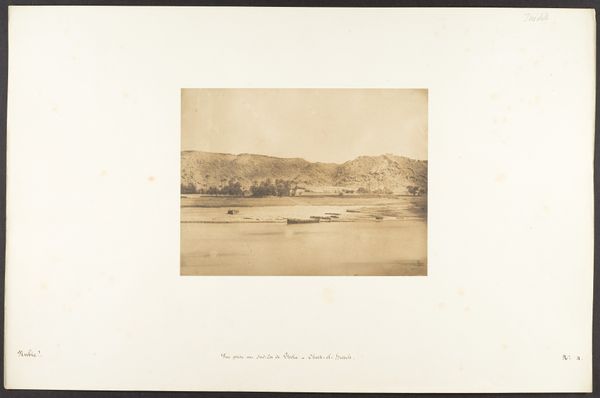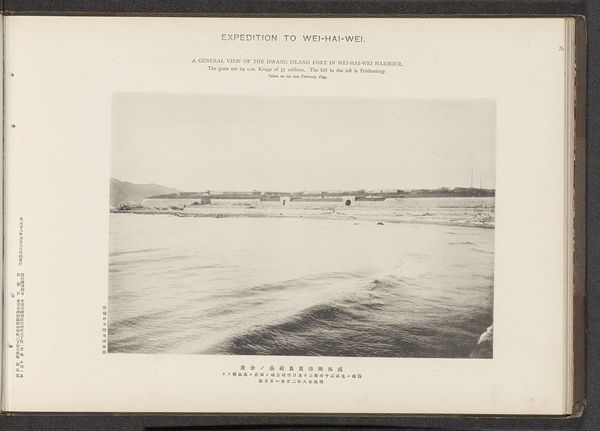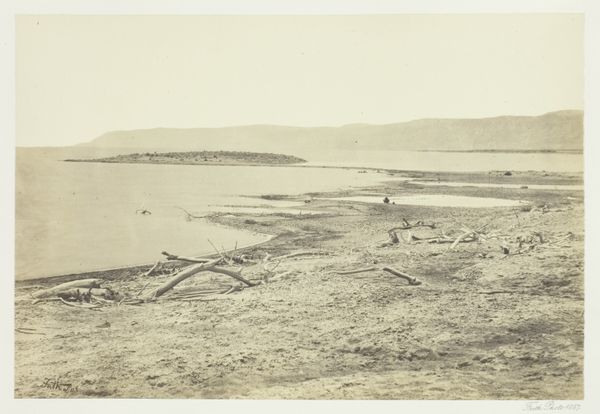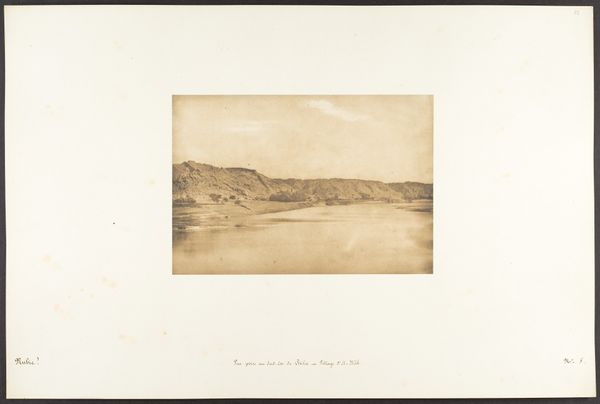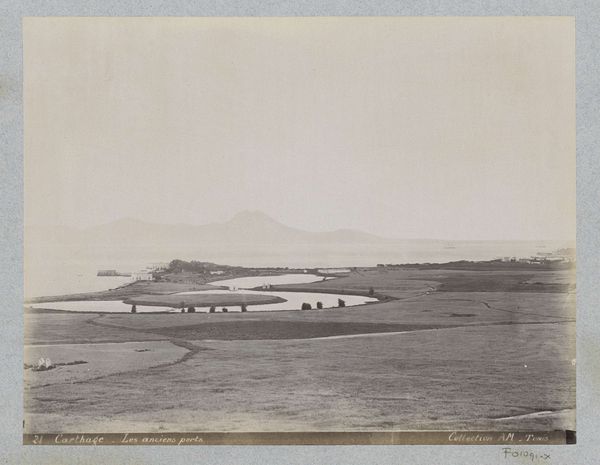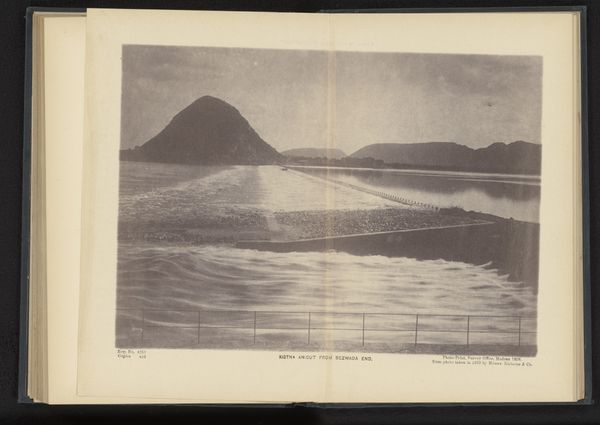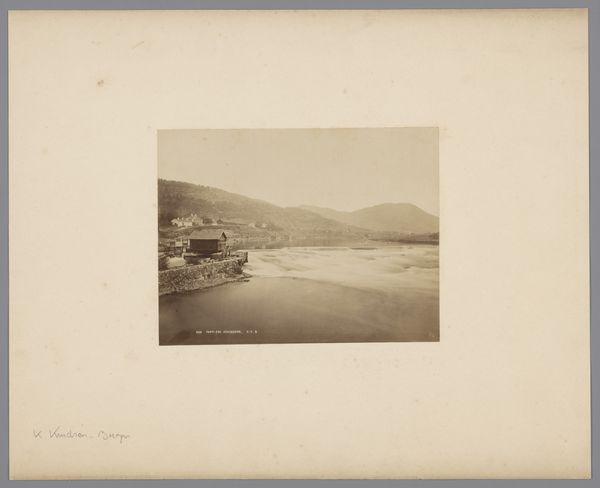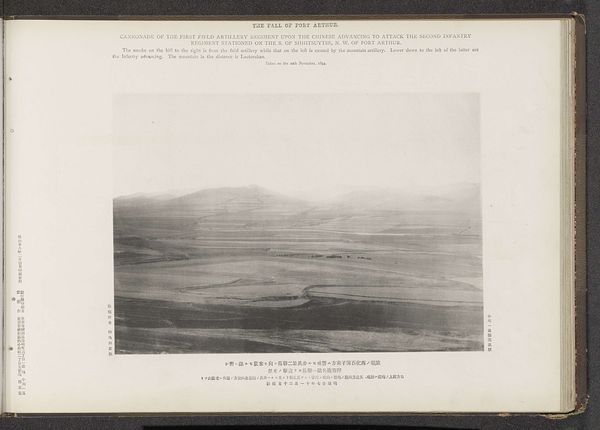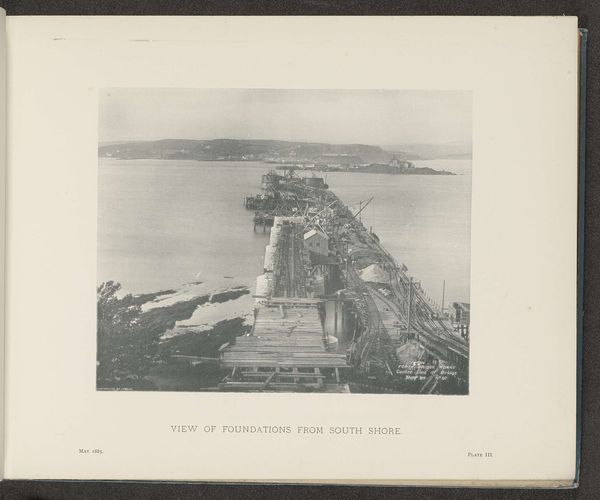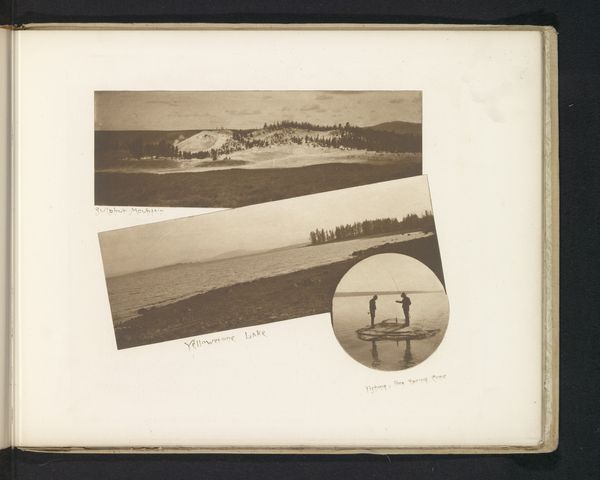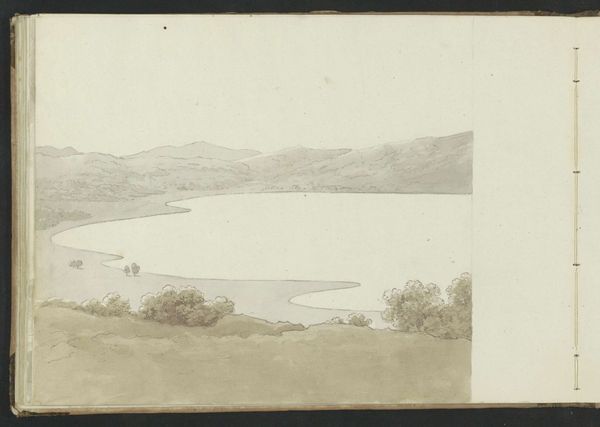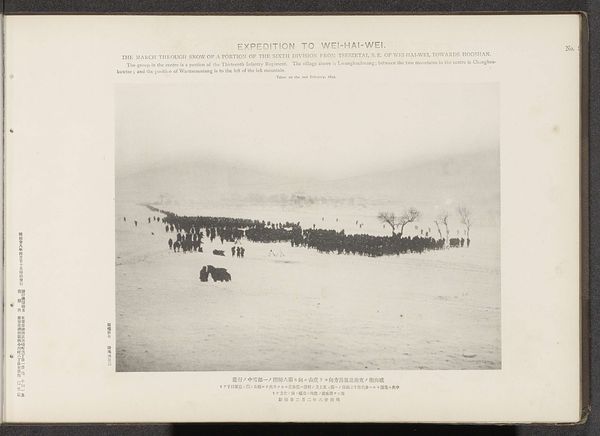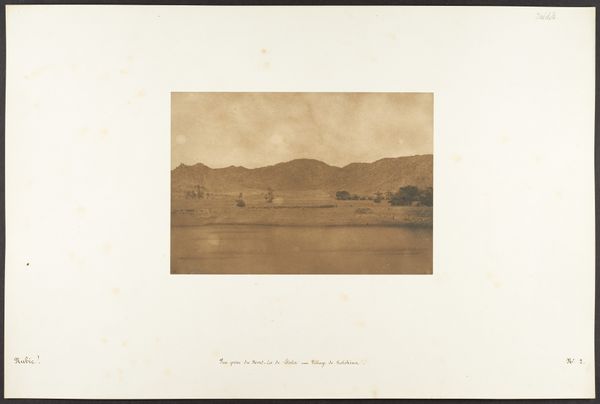
A distant view of the Old tiger's tail fort and the Jentse earworks from the Hwangkin hill forts, Port Arthur Possibly 1894
0:00
0:00
print, photography, gelatin-silver-print
# print
#
landscape
#
photography
#
orientalism
#
gelatin-silver-print
Dimensions: height 212 mm, width 278 mm
Copyright: Rijks Museum: Open Domain
Editor: So, here we have a gelatin silver print, potentially from 1894, titled 'A distant view of the Old tiger's tail fort and the Jentse earworks from the Hwangkin hill forts, Port Arthur', attributed to the Ordnance Survey Office. The scene feels very still, almost desolate. It’s a landscape, but one dominated by these fortifications. What strikes you when you look at it? Curator: What I see is a calculated presentation of power. This photograph isn't just a record of a place, it's a statement. The Ordnance Survey Office creating an image of a defeated fort tells us a great deal about how colonial powers used visual documentation to assert dominance and control narratives. What was the socio-political atmosphere surrounding the production of the image at that time? Editor: I think the image speaks to the aftermath of the First Sino-Japanese War and the capture of Port Arthur by the Japanese. This photograph possibly served as propaganda to show their military gains. It’s interesting how landscape photography became intertwined with geopolitics. Curator: Exactly! The composition emphasizes the scale and strategic placement of these military structures. Consider who the intended audience for this image might have been. Were they celebrating the capture or were they scrutinizing defenses for future encounters? Editor: I hadn’t thought about it like that, as a sort of tactical report dressed up as a landscape view. It makes me think about all the layers of interpretation embedded in what seems like a simple image. Curator: Indeed. The public role of art extends far beyond aesthetic pleasure; this piece actively participates in constructing historical narratives and justifying imperial ambitions. Thinking about this interplay of power and representation allows a deeper understanding of its historical function. Editor: It is incredible to consider the confluence of artistic vision, surveying work, and imperial ambition that defines it. This dialogue really opened my eyes to the political undercurrents running beneath the surface of seemingly objective landscape photography. Curator: And understanding those undercurrents, we begin to deconstruct the image's initial intention and formulate our own interpretations shaped by contemporary understanding. A very valuable discussion, indeed.
Comments
No comments
Be the first to comment and join the conversation on the ultimate creative platform.
